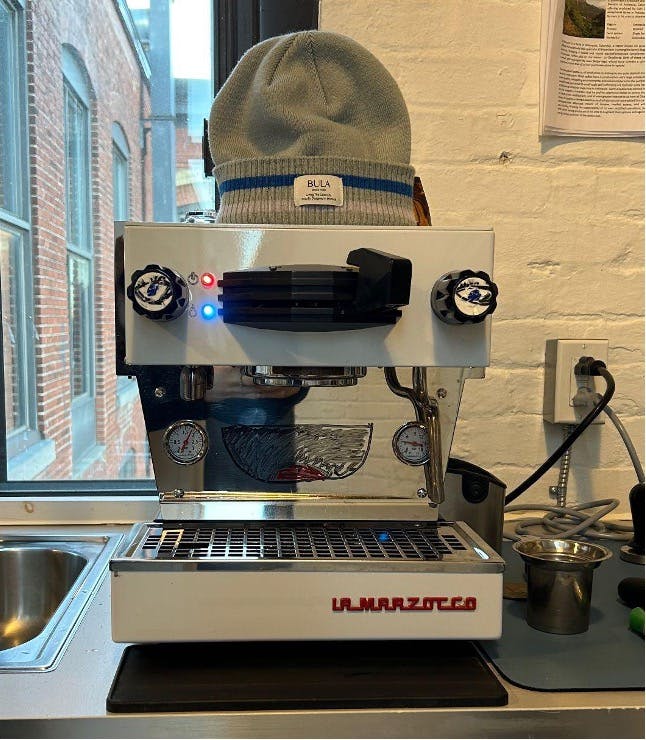Why Your Next Hire Should Be a Coffee Machine
Meet Linea “Mini,” the Senior Coffee Machine at The Decision Lab.

Hailing from the La Marzocco clan, Mini’s predecessors have found significant success in various organizations around the world. Unsurprisingly enough, Mini’s older sibling, “Linea Classic,” used to be the CCO (Chief Coffee Organizer) at the popular Starbucks chain for 15 years.
Like everyone else at The Decision Lab, Mini is a hard worker, always the first one in and the last to leave (in fact, we feel like they never leave the office).
When we asked Mini if they knew how important their role was at TDL, we got an empathetic “brnggghhh” followed by “pssssshhhhh” as they literally blew off some steam – all 1.8 bars of it to be exact – at the end of a long day of caffeinating the Montreal team.
Mini will never admit how critical their role is at the organization. Even though they’re not part of the consulting team, all of us here know that without Mini, we’d be asleep.
The funny thing is that Mini and their colleagues “Premium Health Insurance,” “UPTO,” and “Remote Work” are all part of a growing list of unofficial employees in organizations called perks. And the fact of the matter is, they’re not just a passing fad; they’re here to stay.
To better understand perks, along with motivation and employee retention, let’s take a moment to examine the behavioral science behind Mini and their friends.
About the Author
Monty Tengco
Monty Tengco is a Senior Venture Associate at The Decision Lab. He has a degree in Economics and Public Policy, specializing in operations and marketing strategy. Prior to joining The Decision Lab, he’s held various project management roles in digital marketing. He’s also served in business development consultancy roles ranging from co-working spaces to a monastery. In his personal time, he does volunteer work and enjoys cooking.
About us
We are the leading applied research & innovation consultancy
Our insights are leveraged by the most ambitious organizations
“
I was blown away with their application and translation of behavioral science into practice. They took a very complex ecosystem and created a series of interventions using an innovative mix of the latest research and creative client co-creation. I was so impressed at the final product they created, which was hugely comprehensive despite the large scope of the client being of the world's most far-reaching and best known consumer brands. I'm excited to see what we can create together in the future.
Heather McKee
BEHAVIORAL SCIENTIST
GLOBAL COFFEEHOUSE CHAIN PROJECT
OUR CLIENT SUCCESS
$0M
Annual Revenue Increase
By launching a behavioral science practice at the core of the organization, we helped one of the largest insurers in North America realize $30M increase in annual revenue.
0%
Increase in Monthly Users
By redesigning North America's first national digital platform for mental health, we achieved a 52% lift in monthly users and an 83% improvement on clinical assessment.
0%
Reduction In Design Time
By designing a new process and getting buy-in from the C-Suite team, we helped one of the largest smartphone manufacturers in the world reduce software design time by 75%.
0%
Reduction in Client Drop-Off
By implementing targeted nudges based on proactive interventions, we reduced drop-off rates for 450,000 clients belonging to USA's oldest debt consolidation organizations by 46%




















